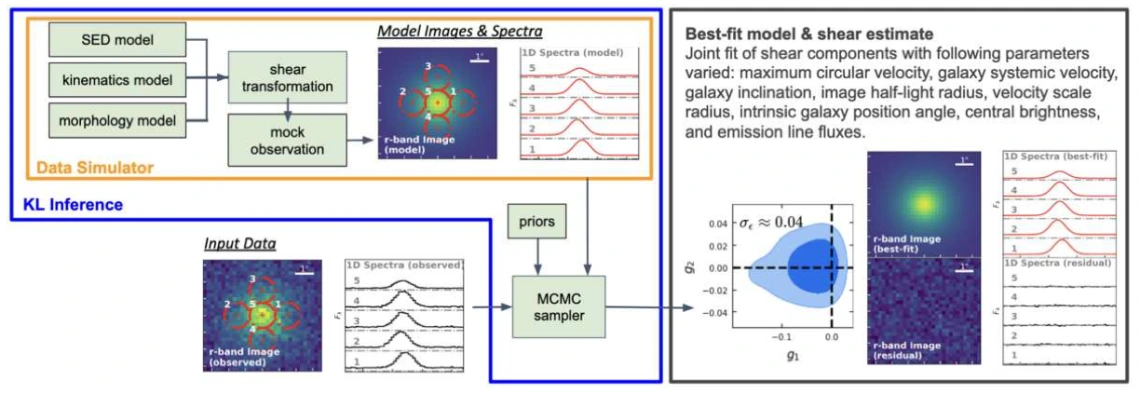New paper out! Kinematic Lensing with the Dark Energy Spectroscopic Instrument -- Probing structure formation at very low redshift

Architecture of the KL shear inference pipeline
We explore the science prospects of a 14,000 deg22 Kinematic Lensing (KL) survey with the Dark Energy Spectroscopic Instrument (DESI) and overlapping imaging surveys. KL infers the cosmic shear signal by jointly forward modeling the observed photometric image and velocity field of a disk galaxy. The latter can be constrained by placing multiple DESI fibers along the galaxy's major and minor axis, a concept similar to the DESI Peculiar Velocity Survey. We study multiple subset galaxy samples of the DESI Legacy Survey Data Release 9 catalog and quantify the residual shape noise, σϵσϵ, of each sample as a function of cuts in rr-band magnitude using mock observations. We conduct simulated likelihood analyses for these galaxy samples and find that a DESI-KL program can place highly interesting constraints on structure formation at very low redshifts, i.e. σ8(z<0.15)σ8(z<0.15). We conclude that if the S8S8 tension consolidates as a phenomenon, a DESI-KL survey can provide unique insights into this phenomenon in the very late-time Universe. Given the different footprints of DESI and Rubin Observatory's Legacy Survey of Space and Time (LSST), lensing results from both surveys are highly complementary and can be combined into a joint lensing survey. We further note that DESI-KL benefits multiple additional science cases, e.g. studies of modified gravity models when combined with peculiar velocity surveys, and dark matter studies that are based on galaxy-galaxy lensing of dwarf galaxies.
